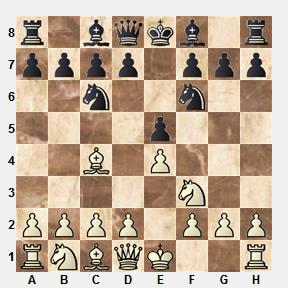There's going to be a mass of good quality chess in Melbourne, both to play in, or to spectate or follow this summer.
The fun starts this weekend, when
Chess Kids, the company I work for hosts their
National Interschool Finals. Actually, it's a huge junior chess festival starting on Sunday 29th November with a set of individual 7-round 15-0 allegro events. Then on the Monday and Tuesday the Chess Kids National Interschool Championship will take place. It is a 7-round 25-10 format with close to 300 players expected over both primary and secondary divisions.
All these junior events are being held at
Queen's College, Melbourne University near the centre of Melbourne.
The weekend after this (5th-6th December) sees
Melbourne Chess Club's amazing summer schedule start with the traditional
Christmas Swiss. Perhaps the publicity for this has been overshadowed by other events coming to the club, but make no mistake that this tournament looks likely to be a good one. Visiting GM Arturs Neiksans from Latvia will be playing in the weekender. He is currently rated 2602, but might be even higher after his performance at the European Team Championship where he scored 4.5/7 including a draw with Arkadij Naiditsch. There are currently over 20 players entered, and this is a good opportunity to get some practice for the Australian Championships.
The MCC then hosts the Australasian Masters which will consist of two 10-player round robins. Chess Victoria President, Leonid Sandler has worked hard to get a GM norm event, and an IM norm event happening, and according to Leonid, this GM tournament might be the strongest ever in Australia. It certainly looks to be one of the strongest, with foreign GM's Neiksans, and Papin competing, and a strong local field including Melbourne based GM Darryl Johansen. I'll be playing in the IM event, so I should be able to bring some first hand reports of the goings on. The tournament runs from 12th-20th December
The Masters then goes out with a bang as it is immediately followed by the Victorian Blitz Championship which will also be hosted by the MCC. In recent years this tournament has proved very strong as players from the Masters join in with the best local players. I don't have details of this event, but it will probably be held Monday 21st December, a good lead in to Christmas.
The Christmas break will bring only a short relief to the summer of chess, as
Box Hill Chess Club hold their traditional Australian Championship warm up event, the Canterbury Summer Swiss. After their move to Waverley/Essex Hills last year, Box Hill Chess Club have had to reinvent themselves a bit. One issue is that the club cannot hold weekend events at their current venue, but thanks to their strong organisational background, they have managed to find a venue for their summer event, the
German Club in Windsor. For anyone who is short on practice before the Australian Championships, this is a must! It runs from the 27th December through to 30th December, and you can
follow details here.
Then comes the big one, the
Australian Championships and Reserves. Hosted by the Melbourne Chess Club in their 150th anniversary year, this is already shaping up to be an amazing tournament. Defending Champion, IM Max Illingworth entered early making it clear he intends to defend his title. But with 2 GM's and another 5 IM's already entered, Max will have to work hard to take the title again. I also intend to play in this event, running from January 2nd-January 12th 2016 at
Fitzroy Town Hall. There is a rest day on 8th January when the Australian Blitz Championship will be held.
Phew...that's an unbelievable amount of chess this summer. But that's not all!!! (I've always wanted to say that, like in the adverts on the shopping channels). The MCC continues as Australia's premier chess venue to host the
Australian Women's Masters event. Starting on 14th January, this will be 10-player round robin event and is shaping up to be the strongest ever women's event in Australia.
The Women's Masters finishes on the 22nd January, which leads nicely into the last event of the summer, Melbourne Chess Club's
Australia Day Weekender. The Australia Day Weekender is, and has traditionally been, the first weekender of the year, even though it will seem like the last in a long line of chess events. Another great field is promised by the very first entry, hanging around after the Women's Masters, WGM Julis Ryjanova of Russia rated currently 2387!
That is an amazing amount of quality chess in Melbourne for players of all standards of players, and at various time limits. Long play chess fanatics have a dream summer coming up. And with the Victorian and Australian Blitz Championships being held here, the fast players should also be satisfied. And even if you are not a fan of long chess, nor the very fast chess, the MCC holds it weekly allegro 15-0 chess tournaments, and these will continue over the summer of chess! I'll be trying to follow as many of these as possible, so stay tuned :)








































